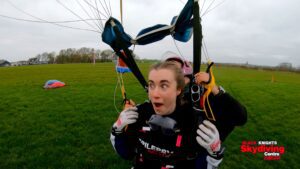Altered responsiveness in psychogenic nonepileptic seizures and its implication to underlying psychopathology
Introduction from Dr Markus Reuber, editor-in-chief of Seizure
Seizure 52 has published Altered responsiveness in psychogenic nonepileptic seizures and its implication to underlying psychopathology
Everybody has an idea what consciousness is, but as a scientific concept, it is remarkably hard to define. In the 1981 classification of the International League Against Epilepsy (ILAE) consciousness was linked to the patients’ degree of awareness and/or responsiveness. While responsiveness was understood as the ability to carry out simple commands or willed movements (intention and perception), awareness was defined as patients’ contact with the event and its recall (memory) (1). In my editor’s choice from the current issue of Seizure Baslet et al. focus on the aspect of responsiveness and what this semiological features tells us about individual patients with psychogenic nonepileptic seizures (PNES) or about this seizure disorder in general (2).
The detailed study of semiology (i.e. the sequential development of subjective symptoms and objective manifestations during the course of seizures) has been the most important clinical tool of epileptologists since Hughlings Jackson pointed out that “a convulsion is but a symptom, and implies only that there is an occasional, an excessive, and a disorderly discharge of nerve tissue on muscles” (3). Semiology research has not only been important for the development of treatments for epilepsy (for instance by enabling and improving epilepsy surgery) but also for neuroscience in general, by teaching us how the brain works.
In contrast, the semiology of epileptic seizures that of PNES has hardly been studied. Unlike epileptic seizures, which are caused by abnormal electric activity in the brain, most PNES are understood as an involuntary response to adverse internal or external triggers (4). Given that PNES are usually interpreted as a “psychological” process, researchers may have been less interested in semiology because they did not expect it to teach them much about the functional connectivity of the brain.
The study by Baslet et al. demonstrates that it may be just as important and insightful to study the semiology of PNES as it is to explore that of epileptic seizures. Insights from this research may tell us less about the anatomy or structure of the brain, but they can tell us about the functioning of the brain, or how pre-existing behavioural, cognitive and perceptional tendencies affect how the brain responds to a state of distress.
Baslet et al. find that patients who are unresponsive during their PNES self-report higher levels of avoidance, a lower tolerance of affect and lower levels of resilience than those who remain responsive during their PNES. Those with altered responsiveness were also more likely to have experienced other conditions (such as brain injuries) involving loss of consciousness themselves or seen them in others, suggesting that previous illness experience may have shaped the manifestations of their seizures.
For now, these findings will help clinicians seeing patients with PNES to understand their patients better. Observing how responsive patients with PNES are during their seizures may allow treatments – such as psychotherapy – to be adapted better to individual patients’ needs. In the future it may be worth examining responsivity in patients with epilepsy with similar tools. It is likely that not all seizure manifestation in patients with epilepsy are directly explained by epileptic discharges. Patients retain aspects of consciousness in many epileptic seizures. It is conceivable that some of the features which determine whether or not responsiveness is preserved in PNES are also relevant in patients with epilepsy – in which case similar therapeutic interventions may allow patients to gain a greater sense of control of their epileptic seizures.
1) Commission on Classification and Terminology of the International League Against Epilepsy. Epilepsy, Proposal for revised clinical and electroencephalographic classification of epileptic seizures, Epilepsia 1981;22: 489–501.
2) Baslet G, Tolchin B, Dworetzky B. Altered responsiveness in psychogenic nonepileptic seizures and its implication to underlying psychopathology. Seizure 2017; 50: xxxxx (insert missing bibliogrpahic details).
3) Hughlings Jackson, J Hughlings Jackson, ‘A study of convulsions’, Transactions of the St Andrews Medical Graduates Association, 3:162-204.
4) Brown, R. J., Reuber, M. Towards an integrative theory of psychogenic non-epileptic seizures (PNES). Clin Psychol Rev. 2016;47,55-70.




